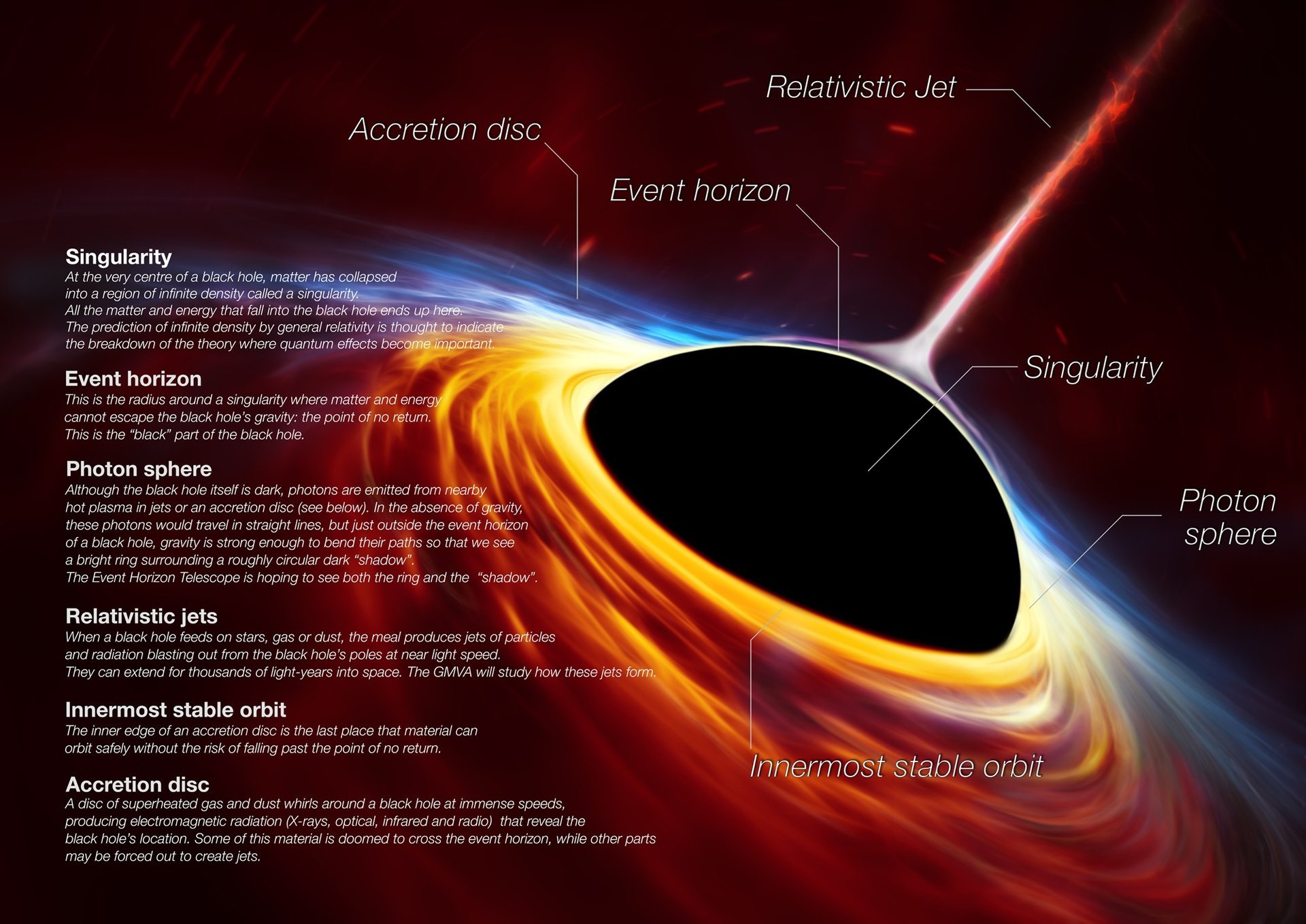For over half a century, scientists have struggled to answer Fermi’s time-honored question: “Where is Everybody?” Answering this question is extremely difficult, partly because of the data-poor nature of the Search for Extraterrestrial Intelligence (SETI) itself, due to a historical lack of funding and resources. However, there are also the inherent assumptions involved that make it difficult to arrive at a simple answer. The way “Fermi’s Paradox” is framed (by its chief proponents, Michael Hart and Frank Tipler), it is assumed that advanced civilizations will naturally seek to expand beyond their home planet and colonize other star systems.
But many researchers have criticized this outlook, emphasizing the difficulties of establishing footholds in environments entirely “alien” to them (e.g., Percolation Theory and the Aurora Hypothesis). There’s also the problem of General Relativity (GR), which establishes that faster-than-light travel is not possible without the existence of exotic physics that is yet unknown to us. In a recent paper, a team of researchers considered several scenarios in which a civilization could expand in a relativistic Universe and concluded that it could be done within (what can be reasonably assumed to be) a civilization’s lifetime.
The study, titled “Redshifted civilizations, galactic empires, and the Fermi paradox,” was conducted by Chris Reiss, an Independent Researcher, and Justin C. Feng, a postdoctoral researcher at the Central European Institute for Cosmology and Fundamental Physics (CEICO) at the Institute of Physics of the Czech Academy of Sciences. As they argue, the rules of General Relativity, combined with a little input from the Kardashev Scale and some other theories related to SETI research, allow for the existence of a Type II Civilization inhabiting the galactic core region, and could also explain why we haven’t heard from them.
Fermi and Drake
Given the number of stars in the Milky Way (100 to 200 billion), the number of galaxies in the Universe (last count, more than two trillion!), and that most stars have at least one planet orbiting them (based on the current exoplanet census), it only seems natural that life would have emerged beyond Earth. Considering the age of the Universe (13.8 billion years) and the fact that the Solar System has only been around for the last third of that time (4.6 billion years), it’s also reasonable to assume that life would have emerged many times by now.
According to Hart and Tipler’s analysis (aka. the Hart-Tipler Conjecture), if advanced civilizations have already emerged in our galaxy, then they would have surely developed the technology for advanced communications, space travel, and self-replicating (Von Neumann) probes as well. By their estimates, a civilization that had achieved this level of technical development would only need 650,000 to 2 million years to colonize the entire galaxy and have been to Earth several times. Given the complete lack of evidence for extraterrestrial civilizations, they argued, they must not exist.
But as Carl Sagan famously argued in a paper he co-authored with fellow astrophysicist William Newman, “The Solipsists Approach to Extraterrestrial Intelligence” (aka. “Sagan’s Response”), “absence of evidence is not evidence of absence.” In addition, Hart and Tipler assumed that once civilizations had established a foothold on other worlds, their colonies would endure for millions or even billions of years. Aside from being a pretty blatant assumption (on top of many others), this thinking is inconsistent with what legendary SETI astronomer Frank Drake proposed with his famous Drake Equation.
While often interpreted as a method for calculating the number of extraterrestrial civilizations in our galaxy (that humanity could communicate with at any given time), the equation is actually a thought experiment that summarizes the challenges facing SETI researchers. And it went a little something like this:
*N = R* x fp x ne x fl x fi x fc x L*
Whereas N is the number of civilizations in our galaxy that we might able to communicate with, R is the average rate of star formation in our galaxy, fp is the fraction of those stars which have planets, ne is the number of planets that can actually support life, fl is the number of planets that will develop life, fi is the number of planets that will develop intelligent life, fc is the number civilizations that would develop transmission technologies, and L* is the length of time that these civilizations would have to transmit their signals into space.
According to Dr. Rebecca Charbonneau, a science historian and Jansky Fellow at the National Radio Astronomy Observatory, Frank Drake considered L to be the most important parameter in his equation. During a lecture delivered at the 2023 Penn State SETI Symposium, titled “Frank Drake and his Place in History,” she summarized the context in which the Drake Equation emerged and the implications it had.
“Suddenly, with the development of the atom bomb and the Cold War, we were for the first time capable of not just destroying our civilization,” she said. “This is not about the Fall of Rome; this is about the end of our entire species, and indeed, perhaps our entire planet. And because of that, L is what really changed he character of how we think about SETI. And I think that Frank agreed with that.”
*Dr. Frank Drake standing in front of the Tatel Telescope at the Green Bank Observatory. Credit: NRAO*
Dr. Charbonneau further elaborated on this point in an interview with the Stories from Space podcast (hosted by yours truly!):
We’ve developed these tools, these weapons, nuclear bombs, that are capable of destroying our entire world as we know it. And so it becomes an existential problem, literally existential. Our existence is on the line. And I think that shift changed the way we think about the problem of communicating and seeking extraterrestrial life. And that’s Frank’s big innovation: he includes the variable L in his equation about longevity, because it’s the first time we’re wrestling with [the possibility that] maybe civilizations don’t last forever.
That Darn Relativity!
One of the biggest sticking points with SETI and the Fermi Paradox is the question of faster-than-light travel. Simply put, it’s not possible, not unless everything we’ve learned about the physical Universe to this point is wrong (or at least, incomplete). In accordance with Einstein’s Theory of Relativity (E=mc2), which is foundational to our understanding of the Universe, objects accelerating towards the speed of light will experience an increase in their inertial mass. This essentially means that as the speed of light approaches, objects feel heavier and require more and more energy to accelerate further.
As a result, the energy required to achieve even a small fraction of the speed of light is extremely high and beyond the capabilities of conventional propulsion. As we explored in a previous article, multiple theoretical concepts have been proposed since the dawn of the Space Age. These include nuclear pulse propulsion (NPP), fusion reactions, and antimatter annihilation, but all suffer from the same drawbacks. Specifically, they all require an absurd amount of propellant to maintain continuous acceleration, which means the vessels themselves must be immense.
This means that such ships would be prohibitively expensive and extremely challenging to build. In addition, the physical stress on the crew from all this acceleration would be considerable. As Reiss and Feng told Universe Today via email, the challenges of relativistic travel are legion and have implications for the Fermi Paradox:
The timescales for interstellar travel exceed present human lifetimes unless one travels at ultrarelativistic velocities (or velocities very close to the speed of light). The intolerance of human biology to high acceleration increases the time required to reach such ultrarelativistic velocities. Moreover, the amount of energy required to propel a vessel to such ultra-relativistic velocities is extremely high, far above the rest energy of the vessel. These problems are perhaps anthropocentric, arising from our limited lifespans and limited tolerance to high acceleration and long periods of social separation.
As if that weren’t enough, there’s also the problem of time dilation: the difference in measured time between two reference frames. As Einstein demonstrated, this phenomenon occurs either because of differences in relative velocity between them (Special Relativity) or because of differences in gravitational potential (General Relativity). As Reiss and Feng argue in their paper, this same phenomenon also makes interstellar exploration unpalatable.
The Twin Paradox
To illustrate, a space-going vessel traveling at 20% the speed of light were to travel to the nearest star (Proxima Centauri) and back, carrying passengers. Located 4.25 light-years from Earth, a two-way transit would take at least 42.5 years (21.25 x 2) at this speed and would require several years of acceleration and deceleration between destinations. So if we were to round that up, we can safely assume that it would take more than half a century for the spacecraft to return to Earth from the perspective of those living here. But for the passengers, only about 10 years would have passed. And that time difference only involves the nearest star system!
This leads to what is known as the “Twin Paradox,” which famed astronomer Carl Sagan illustrated in his 1963 paper “Direct contact among galactic civilizations by relativistic interstellar spaceflight.” As Reiss and Feng explained:
Carl Sagan proposed a simple model of motion in which a traveler accelerates with a constant acceleration of 1g for a time (in linear motion), then decelerates at 1g back to rest (relative to the galactic reference frame). In this manner, a traveler from Earth can, for instance, reach the center of the Milky Way and return to Earth in a few decades of ship time. However, the Earth and everything on it will have aged tens of thousands of years, far exceeding human lifespans (cf. the twin paradox). Even if human lifespans can be extended, one might imagine such extreme temporal disparities (decades vs tens of millennia) to be rather problematic.
As Reiss and Feng presented in their study, a civilization migrating to a time-dilated environment would resolve this paradox. To address the separation problem, they propose the migration of human civilization to a time-dilated frame and the synchronization of trips to ensure that everyone ages at the same rate. Once there, our civilization would be able to reap the benefits of life in a “red frame” environment. Reiss used this term in a previous study to describe the relativistic effects of gravity on the wavelength of light: elongating and shifting it towards the red end of the spectrum (aka redshift).
Galactic Center
In his previous study, Reiss presented how an advanced civilization could be motivated to relocate itself into a highly dilated reference frame. A viable option, as he stated, (perhaps the only one), is a near orbit around a supermassive black hole (SMBH) like Sagittarius A* at the center of our galaxy. Within this “red frame,” he argued, the relativistic effects of the SMBH will cause the civilization to experience time at a much slower pace than the outside Universe.
Living in such an environment would offer many advantages: a time-dilated civilization could watch the Universe unfold and evolve at a much faster pace. If the relativistic effects were such that clocks ran 100 times faster outside the red frame, external distances would also be compressed by a factor of 100. This would make such a civilization far more capable of exploration, since any probes sent into the “blue frame” would traverse the entire galaxy in what would appear to be a fraction of the time for those in the red frame.
 *Annotated diagram of a supermassive black hole, its accretion disk, and its relativistic jet. Credit: ESO*
*Annotated diagram of a supermassive black hole, its accretion disk, and its relativistic jet. Credit: ESO*
Other advantages include an accelerated pace for harvesting resources, building megastructures, terraforming, advanced research, and other activities an ETI might wish to undertake. By positioning outposts within the blue frame, a red-frame civilization would benefit from centuries’ worth of advances in just a few years. What’s more, as the Transcension Hypothesis argues, the vicinity of black holes also offers limitless energy (via the Penrose Process) and could allow for all kinds of extreme physical science.
In this latest study, Reiss and Feng explored different red-frame environments to determine which would be the most advantageous. This included an orbit around an SMBH, a synchronized network of linear trajectories following Sagan’s model, and a trajectory bent into a closed path by the gravity from a ring of black holes. Of these, they determined that option one was the most beneficial. And as they explained, this would be within the capabilities of civilizations that had not yet mastered their entire galaxy – aka. a Type III civilization on the Kardashev Scale:
Of the cases we considered, an orbit around an SMBH requires the least amount of energy and power to achieve and maintain. We find that a civilization somewhere between a Kardashev Type I and Type II civilization can, in principle, maintain such an orbit. The drawback is that the amount of time dilation is limited by the human tolerance for tidal forces (a fraction of 1g over long periods). For orbits around Sgr A*, this limit is a time dilation factor of about 100. With such a time dilation factor, one can travel 100 light-years in a few years of ship time—we estimate that there are around a million stars within 100 light-years of Sgr A*, so there is no shortage of destinations in such a setup.
However, 100 light-years is still small compared to the diameter of the Milky Way, so one might wonder whether a civilization with a higher power capacity can do better – this is why we considered the other cases. We find that a Type II civilization can implement case 2) with a time dilation factor of 10,000, and that a civilization “halfway” (in orders of magnitude) between Type I and Type II can implement case 3) (also with a time dilation factor of 10,000). One may therefore imagine a civilization evolving from case 1) to case 3) as it advances up the Kardashev Scale.
The “Dark Forest” Hypothesis
Another big takeaway from this study (and Reiss’ previous work) is how it presents a possible resolution to the Fermi Paradox. Specifically, the idea of a civilization inhabiting the time-dilated environment of an SMBH is consistent with the Dark Forest Hypothesis. As detailed in a previous article, this hypothesis posits that advanced civilizations are undetectable because they go to great lengths to avoid detection. The hypothesis takes its name from the novel The Dark Forest written by Liu Cixin, author of the Three-Body Problem and the Remembrance of Earth’s Past series.
As Liu illustrated through one of the novel’s characters, we can assume that if the galaxy is composed of civilizations, they would share common motivations – foremost of which is the need for survival and the desire for growth. However, since resources in our Universe are finite, competition will emerge sooner or later. At the same time, living in a relativistic Universe means that any communication between civilizations will be subject to significant time lags. This will likely lead to “Chains of Suspicion,” where both sides fear what the other might be plotting in the meantime.
Similarly, even if most civilizations are benevolent and well-meaning, the fear that others could be malevolent might lead some to conclude that it is better to shoot first and ask questions later. However, given the nature of relativistic space travel, a fleet of ships would take a very long time to arrive around another star system, giving the local civilization hundreds (or perhaps thousands) of years to develop further. Whereas the fleet will be just as advanced as it was when it left, the local civilization will have experienced a “Technological Explosion.”
Under these circumstances, civilizations may conclude that avoiding contact is the best policy. As Reiss and Feng noted, this conundrum bears a striking resemblance to the Twins Paradox:
Assuming that other civilizations have similar biological limitations as ours, one might imagine that they would also migrate to a time-dilated frame. A vessel in a time-dilated frame is rather vulnerable to destruction. We calculated that for a fast-moving vessel at a time dilation factor of 10,000, a 100 kg object placed in its path will, upon collision, have an impact energy comparable to the Chicxulub impact that caused a mass extinction 65 million years ago. Particularly concerning is the fact that we now have the capacity to place 800kg objects (the Voyager probes) in interstellar space.
A civilization traveling toward us at the aforementioned time dilation factor would see human civilization (assumed to be less than 10,000 years old) emerge and develop this capacity in less than a year. We may already pose an existential threat to highly time-dilated civilizations. One might expect the rapid emergence of such existential threats to compel a time-dilated civilization to remain quiet.
However, the researchers’ findings also raise the prospect that ETIs near the center of the Milky Way might choose to eliminate civilizations outside of their red frame. This calls to mind yet another proposed resolution to the Fermi Paradox: the terrifying Berserker Hypothesis! This theory argues that the reason for the “Great Silence” is that an advanced civilization, faced with the prospect of competition from other species, would opt to flood the Universe with self-replicating probes that would seek out other ETIs and eliminate them.
But as Reiss and Feng stated during a presentation of their study at the 9th Interstellar Symposium, held on Oct. 15th in Austin, Texas, it’s not all doom and gloom in the scenario they propose:
Even if these things are indeed a reality, such a situation is not new. Throughout history, we have often found ourselves as weak, vulnerable humans in an environment hostile to our existence. And through those experiences, we have learned to value courage in the face of extreme danger. So I would advocate that we continue to broadcast our presence to these redshifted civilizations (supposing they exist) in the full knowledge of our threat to them and their threat to us, and in the hope, faith even, that they might share our courage in the face of existential threats, and that the same courage might compel them to reach out to us.
As the authors explored in this (and Reiss’ previous) paper, there may also be ways to determine if there are any civilizations residing at the center of our galaxy. “Vessels in orbits around an SMBH will have to counter the drag from the accreting gas, and the power required to do so (depending on the size of the vessel) can be as high as ~10^19 Watts, about the luminosity of a Brown dwarf,” they said. “We considered a simple model in which this power is radiated away isotropically in the form of electromagnetic waves, and we find that a characteristic feature of the resulting signal is a downward frequency drift over a single orbit.”
They also consider how multiple civilizations may have taken up residence near an SMBH to take advantage of a time-dilated reference frame. If this were the case, orbital lanes could become a scarce resource, increasing the likelihood of conflict. Open warfare between civilizations would produce signatures that would probably be difficult to miss. As you can tell, there are a lot of takeaways from this study, and a lot of potential opportunities for follow-up studies and future SETI surveys.
Further Reading: arXiv
First Appeared on
Source link











